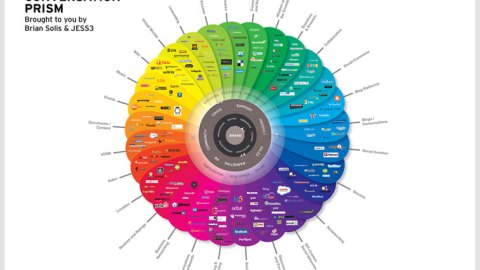Social Media Trends: Thoughts from the Field

Guest post from Beth Becker…
Social media has always been a fast moving field. What’s new and exciting one day quickly gets tossed aside for the next shiny new toy. Lately I’ve been getting a lot of questions about what I think are some of the trends not just for the next month or two but with staying power, so I gathered my thoughts and came up with the following 6 that I think have staying power.
1. The holistic use of social media: In its short history, social media has been jailed within the communication department and thereby not used to its full potential. The reality is that social media is a tool that can augment everything an organization does from volunteer recruitment/management to internal communications to fostering community with supporters and even field organizing. The trick is to not be afraid to think outside the box and try new things. Running a door to door canvas? Communicate with your door knockers via twitter. Need to do a training w/some remote volunteers? Consider using a Google Plus Hangout.
2. The strategic use of social media: Just throwing a message out on Facebook or Twitter is no longer the standard and as data gathering becomes ever more sophisticated in the online networking space, we are using social media ever more strategically. It begins with embracing that it is in fact called socialmedia for a reason, but that doesn’t mean it can’t or shouldn’t be managed in a thoughtful and purposeful manner. The more strategic we become in our use of social media the more everyone in the conversation benefits.
3. It’s all about the visual: One trend that’s only going to grow in both the short and long term is the emphasis on the visual. Twitter now embeds pictures and video right in the web version. Facebook’s new timeline emphasizes the visual and their new algorithms for newfeeds of both profiles and pages gives heavier weight to posts with a visual aspect. You Tube’s popularity is still growing and of course, the newest platform everyone is talking about is Pinterest. The bottom line is, we as a society have ever shortening attention spans and the visual is the key to gripping attention and social media is recognizing and capitalizing on that.
4. The continuing rise of mobile: Coming into 2012 over 85% of the US population is using mobile with many of that group using it as their primary communication tool. Over 55% of Twitter users and ⅓ of Facebook users use their smart phone to access their social media. These numbers haven’t come close to plateauing. It’s been predicted that by 2013 SMS traffic will exceed 10 trillion texts. The ramifications of this can’t be ignored. If your website isn’t mobile friendly you’re potentially losing thousands of page views.
5. The growth of simultaneous action: One of the long time issues in digital advocacy has been moving people to take action and removing as many barriers to that action as possible. The recent appearance of several tools to do just that are just the beginning. Two such examples would be Call2Action, a widget known as a Spark that allows viewers of online video to take action from within the widget without leaving the video. The variations in how Sparks can be built allow for a notable increase in engagement building with your audience while providing robust metrics that allow for continuous adjustments to make your Spark’s ROI as large as possible. Similarly, RaiseYourVoice is a widget that is embedded in blogs/news sites that allows someone who is moved to do so to send a letter to an elected official at any level of government from city council up without leaving the webpage in an easy to use pop up. Additionally, they are building out a platform for targeted ads that will be served on the final landing page that smart advocacy groups will use to identify and engage people predisposed to taking action having already done so.
6. Sentiment Analysis: Sentiment analysis has been used in the corporate world for years but its use in the political/advocacy space is just beginning to spread. As targeting abilities get more sophisticated, the use of sentiment analysis for message testing and creation will only increase. Being able to target allows for more robust measures of actual sentiment to allows us to not just test messaging but to understand what the grasstops (and by reflection the grassroots) really care about.
These are just some of the trends I’m seeing in my work in the digital political/advocacy space. What trends are you seeing? What do you think I missed the call on? Let’s have a conversation in the comments….
____________________
Beth Becker is a consultant specializing in social media strategy for political campaigns, Members of Congress and advocacy organizations. She is also the Communications Director for ProgressiveCongress.org and Managing Editor of Progressive Congress News. Find her on Twitter at @Spedwybabs.





